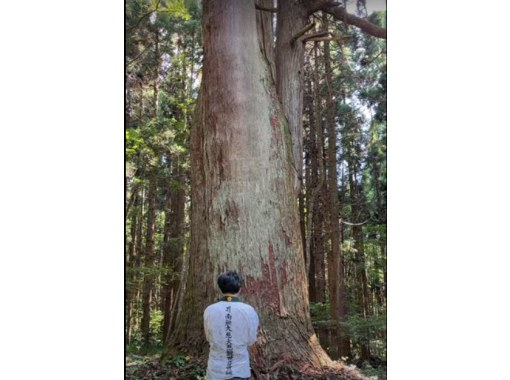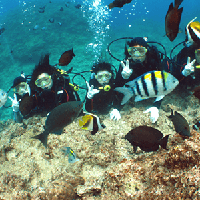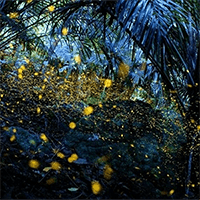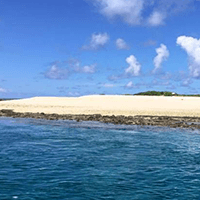- Age 12~Age 100
- 5~6 hours
- 15:30
Shizuoka has flourished as a post town on the Tokaido road since the Edo period and as a tea-producing region. Please enjoy the unique "Chaji" experience that continues to cherish the history and culture of Shizuoka through local daily life and festivals. "Chaji CHAJI ~ Iki~" is a top-class banquet where you can fully enjoy the culture of a post town on the Tokaido road.・Duration: Approximately 5 hours ・Meals: Traveler's Kaiseki ・Traditional performing arts: Either Nagauta, Shamisen or Japanese dance ・General schedule: ⑴ A curator or local guide will introduce and explain the local history and culture of the Tokaido post town, which has been nurtured by the tea industry ⑵ A performance of one of the traditional performing arts, Nagauta, Shamisen or Japanese dance, which has been passed down in the culture of the post town ⑶ Kaiseki cuisine that pairs well with green tea and local sake ⑷ A tea ceremony with local sencha and sweets by a tea farmer or tea master ~Experience flow~ Experience a banquet "Chaji" where you can enjoy "Shizuoka green tea", the number one tea producing region in Japan, and "400 years of Tokaido post town culture" Iki plan *We will pick you up by taxi from Kakegawa Station, Shimada Station, or your accommodation in Kakegawa or Shimada city. ●Meeting place: Fujibun (Kakegawa City) or Sakurai Residence (Shimada City) 15:30●Greetings and explanations 15:30 - 16:00 Introducing the unique story of Tokaido post town culture and tea culture in this area ☆Kawasakaya (Kakegawa City): Guided tour of Hizaka-juku in the Edo period by the Kawasakaya Association and performance of Hizaka Mago Utagi ☆Oigawa Kawagoe Ruins (Shimada City): Guided tour of the Kawagoe system in the Edo period while touring the meeting hall, jin'ya, Sakurai Residence, etc. ●Yorozuya (Kakegawa City) or Sakurai Residence (Shimada City) 16:10 - 17:10 Traditional performing arts performance Either shamisen, nagauta, or Japanese dance ●Fujibun (Kakegawa City) or Sakurai Residence (Shimada City) 17:20 - 18:20 ☆Tea party with local sencha *A recreation of "ame no mochi" (candy rice cake), which is said to have been a favorite of Tokugawa Ieyasu, will be served as a tea snack. *Kappo Uomitsu (Kakegawa City) or Sakurai House (Shimada City) 18:40 - 20:00 ☆Kaiseki cuisine that combines green tea and local sake ☆After greetings, disband around 20:10 *We will take you by taxi to Kakegawa Station, Shimada Station, or your accommodation in Kakegawa or Shimada City. *The itinerary may change depending on the season, weather, and other circumstances, as well as the venue.
- Age 12~Age 100
- Over 6 hours on the day
- 14:00
Shizuoka has flourished as a post town on the Tokaido road since the Edo period and as a tea-producing region. Please enjoy the unique "Chaji" experience that continues to cherish the history and culture of Shizuoka through local daily life and festivals. "Chaji CHAJI ~Hana~" is a top-class banquet where you can fully enjoy the culture of Tokaido post towns. Duration: Approximately 6 hours Meal contents: Kaiseki cuisine for senior retainers Traditional performing arts: Nagauta, shamisen or Japanese dance. Performing arts experience: Experience either shamisen or Japanese dance. Outline schedule: 1. Explanation and guide from producers at tea plantations cultivated using the Chagusaba method, a World Agricultural Heritage System. 2. Explanation and guide from curators and local guides about the history and culture of the Tokaido post towns and tea industry. 3. Performance of one of the traditional performing arts passed down in the post town culture: Nagauta, shamisen or Japanese dance. 4. Kaiseki cuisine that pairs well with green tea and local sake. 5. Tea ceremony with local sencha and sweets by tea farmers or tea masters. ~Experience flow~ Experience a banquet "Chaji" where you can enjoy "Shizuoka green tea", the number one tea producing region in Japan, and "400 years of Tokaido post town culture". Hana Plan *We will pick you up by taxi from Kakegawa Station, Shimada Station, or your accommodation in Kakegawa or Shimada City. 00~17:10 English: ●Meeting place: Fujibun (Kakegawa City) or Sakurai Residence (Shimada City) 14:00●Greetings and explanations Learn about the unique stories of Tokaido post town culture and tea culture in this area 14:00 - 14:20 → (Travel by private vehicle) → ●Tea fields A tea farmer will explain local tea cultivation 14:35 - 15:05 (Tea picking experience depending on the season) → (Travel by private vehicle) → ●Kawasakaya (Kakegawa City) or Sakurai Residence (Shimada City) 15:20 - 16:00 Kawasakaya: Guided tour of Hizaka-juku in the Edo period by the Kawasakaya Association and performance of the Hizaka Mago-uta song Oigawa Kawagoe Ruins: Guided tour of the Kawagoe system in the Edo period while touring the meeting hall, jin'ya, Sakurai Residence, etc. ●Yorozuya (Kakegawa City) or Sakurai Residence (Shimada City) 16:10 - 17:10 Traditional performing arts performance and experience Either shamisen, Nagauta, or Japanese dance ●Fujibun (Kakegawa City) or Sakurai House (Shimada City) 17:20 - 18:20 ☆Tea party with local sencha tea ※A tea snack made with a replica of "ame no mochi" (candy mochi), which is said to have been a favorite of Tokugawa Ieyasu ●Kappo Uomitsu (Kakegawa City) or Sakurai House (Shimada City) 18:40 - 20:00 ☆Kaiseki cuisine with a marriage of green tea and local sake ☆After greetings, disband around 20:10 ※We will take you by taxi to Kakegawa Station or Shimada Station or to your accommodation in Kakegawa or Shimada City. ※The itinerary may change depending on the season, weather, and other circumstances, as well as the venue.
- Age 12~Age 100
- Over 6 hours on the day
- 13:00
Shizuoka has flourished as a post town on the Tokaido road since the Edo period and as a tea-producing region. Please enjoy the unique "Chaji" experience that continues to cherish the history and culture of Shizuoka through local daily life and festivals. "Chaji CHAJI ~ Miyabi ~" is a top-class banquet where you can fully enjoy the culture of a Tokaido post town. Duration: Approximately 7 hours Meal content: Lord's kaiseki cuisine Traditional performing arts: High-class kimono, Nagauta, shamisen, and Japanese dance Performance experience: Shamisen and Japanese dance experience Outline schedule: 1. Explanations and tours from producers at tea plantations cultivated using the Chagusaba method, a Globally Important Agricultural Heritage System 2. Curators and local guides introduce the history and culture of this Tokaido post town, nurtured by the tea industry 3. A performance of traditional performing arts that are passed down in post town culture, such as Nagauta, shamisen, and Japanese dance 4. Experience the kimono culture that has been cultivated in Shimada-juku, famous for its obi festival that has been passed down since the Edo period, by trying on a kimono 5. Kaiseki cuisine that pairs well with green tea and local sake ⑹ Tea ceremony with local Sencha tea and sweets by a tea farmer or tea master. ~Experience process~ *We will pick you up by taxi from Kakegawa Station, Shimada Station, or your accommodation in Kakegawa or Shimada City. 00~17:10 English: ●Meeting place: Fujibun (Kakegawa City) or Sakurai Residence (Shimada City) 13:00●Greetings and explanations Learn about the unique stories of Tokaido post town culture and tea culture in this area 13:00 - 13:20 → (Travel by private vehicle) → ●Tea fields A tea farmer will explain about local tea cultivation 13:30 - 14:10 (Tea picking experience depending on the season) → (Travel by private vehicle) → ●Kawasakaya (Kakegawa City) or Sakurai Residence (Shimada City) 14:30 - 15:00 Kawasakaya: Guided tour of Hizaka-juku in the Edo period by the Kawasakaya Association and performance of the Hizaka Mago-uta song Oigawa Kawagoe Ruins: Guided tour of the Kawagoe system in the Edo period while touring the meeting hall, jin'ya, Sakurai Residence, etc. ●Yorozuya (Kakegawa City) or Sakurai Residence (Shimada City) 15:10 - 17:10 Traditional performing arts performance and experience Shamisen, Nagauta, and dancing 15:20 - 16:20 ☆ Kimono dressing experience (limited number) 16:20 - 17:20 ● Fujibun (Kakegawa City) or Sakurai House (Shimada City) 17:20 - 18;20 ☆ Tea ceremony with local sencha ※ A reproduction of "ame no mochi" (candy mochi), which is said to have been a favorite of Tokugawa Ieyasu, is served as a tea snack ● Kappo Uomitsu (Kakegawa City) or Sakurai House (Shimada City) 18:40 - 20:00 ☆ Kaiseki cuisine with green tea and local sake ☆ After greetings, disband Around 20:10 * We will take you by taxi to Kakegawa Station or Shimada Station or your accommodation in Kakegawa City or Shimada City. * The itinerary may change depending on the season, weather, and other circumstances, and depending on the venue.
- Age 7~Age 85
- 4~5 hours
- 10:10
<Schedule> We will hold a trip to the history and culture of Asakusa. Asakusa is a downtown area of Tokyo that still retains the atmosphere of the Edo period. Enjoy the charm of Japan to the fullest while visiting places where Japanese tradition and culture live on, such as Kaminarimon, Nakamise-dori, and Sensoji Temple. 10:00 Meet at Asakusa Kaminarimon. Duration: 30 minutes Kaminarimon is the iconic entrance gate to Sensoji Temple in Asakusa, Tokyo. It is famous for its giant red lanterns and the statues of the wind god and thunder god. 10:30 Walk from Nakamise-dori: 1 hour The long shopping street called Nakamise is the best place to buy traditional Japanese souvenirs in Tokyo. 11:30 Walk from Sensoji Temple: 45 minutes This area, which flourished as a temple town of Sensoji Temple since the Edo period, is one of Japan's leading tourist destinations. It is also a great place for photography and you can create beautiful memories. <Kaiseki cuisine, Japanese dance performed by geisha> 12:15 Sensoji Temple → Restaurant (Kappo Tonbo or Saryo Ichimatsu, etc.) 12:30 Kaiseki cuisine at a restaurant + Japanese dance performed by a geisha. Duration: 2 hours Enjoy a luxurious time enjoying kaiseki cuisine and Japanese dance performed by a geisha. Enjoy the fusion of Japanese gourmet food and art. Kaiseki cuisine is traditional Japanese cuisine served at banquets and other events. It is known for being low in calories and healthy. Japanese dance is a traditional Japanese performing art that began in the early Edo period and mixes dance and pantomime. The geisha will wear an elegant kimono and have a beautifully tied Japanese hairstyle. 14:30 Restaurant → Arrive at Kaminarimon 15:00 End of tour at Kaminarimon.
- Age 6~Age 80
- 2~3 hours
- 09:00
With snowshoes, you can easily walk in deep snow. In the woods that you can't walk in the summer, sometimes walk on the lake, look for animal footprints, and enjoy the winter nature of Niseko! Since it is a private tour, children can participate with confidence.
- Age 0~Age 100
- 2~3 hours
- 10:00 / 13:30
<Introducing an unknown old-style folk house cafe in Yokohama♪> When you think of Yokohama, you probably imagine a big city, right? In fact, Yokohama has many historic buildings with a long history, and cafes using old-style houses are secretly booming! Why is there a cafe here? What is the history of this building? We will tell you the inside story of this place and the story behind the birth of the cafe as we head to the location. After you have had a wonderful time, we will take you to the nearest station of your choice. Experience the true charm of Yokohama! ★Make your reservation early!!
- Age 2~Age 99
- Over 6 hours on the day
Round-trip bus included from Kumamoto city to Kurokawa Onsen! For lunch, you can enjoy a luxurious tofu set meal made with plenty of Tofu Kissho's special tofu. After lunch, it is a one-day relaxing plan where you can enjoy an extraordinary experience while walking through the streets of Kurokawa Onsenkyo. ★What is a "route bus trip"? It is a great value trip that includes a ticket for express buses, route buses, etc., and tickets for use of various facilities. Tourists and guides will not accompany you, and you will be required to move on your own.
- Age 20~Age 70
- 2~3 hours
- 16:30
Stroll through the town while learning about the history of Tondabayashi Jinaimachi, the only place in Osaka designated as a building preservation area. At Banriharu Sake Brewery, a former Japanese sake brewery that has recently been reborn as a craft beer brewery, you can enjoy craft beer made from golden well water and locally produced food!
- Age 0~Age 99
- 5~6 hours
Tour code: A2-GR01-000100This is a sightseeing bus that allows you to fully experience the charms of Amakusa. You can rest assured with a guide. Please let us know the boarding location (time) and the drop-off location when making your reservation. This is a packed course that visits the Oe Sakitsu Church, a symbol of Amakusa's Christian culture, which is a component part of the World Heritage Site "Hidden Christian Sites in the Nagasaki and Amakusa Region" (Sakitsu Village in Amakusa), and three museums that convey the history of Christianity to the present. (Varies depending on the ride time)The roadside station Kakashi no Sato on the course is a roadside station that reused the abandoned Miyajidake Elementary School, and is the first of its kind in Western Japan! It is a very rare roadside station. Please have lunch at the roadside station Kakashi no Sato restaurant on your own. (Lunch will be served at Aimura on closed days: 1st and 3rd Wednesdays)There is also a great value "round-trip viewing ticket"! You can purchase it on the day. (Amakusa Christian Museum, Amakusa Collegio Museum, Amakusa Rosario Museum, and Sakitsu Museum Minatoya sell a "round trip ticket" that allows you to visit all four museums at a discount.) Each tourist facility incurs a fee, which must be paid by each customer (round trip tickets are sold on the day for 600 yen) Amakusa Christian Museum: Adults 300 yen, High school students 200 yen, Elementary and junior high school students 150 yen Amakusa Collegio Museum: Adults 300 yen, High school students 200 yen, Elementary and junior high school students 150 yen Amakusa Rosario Museum: Adults 300 yen, High school students 200 yen, Elementary and junior high school students 150 yen Minatoya: 100 yen per person
- Age 3~Age 80
- 5~6 hours
- 09:15
We will travel around various places in a private car (taxi). From the "Cup Noodle Museum", you will have a guided tour of the "Kobayashi Ichizo Memorial Museum", a great man representing Ikeda, and the "Ikeda Castle Ruins". In the first part, you will have the opportunity to experience copying sutras and zazen at "Kyuanji Temple", which was founded by Gyoki Bodhisattva, was a temple established by Emperor Konoe, and was visited by Toyotomi Hideyoshi. For lunch, you will enjoy a specially planned "Nichireku Special" lunch at Hirakawa River. In the second part, you will visit the "Oshima Tsumugi Museum" to see the workshop and exhibits, take photos wearing Oshima Tsumugi, soothe yourself in the hot springs at "Fushiohkaku", and enjoy a "seasonal bento" lunch. Enjoy a day in Ikeda, Osaka!
- Age 0~Age 99
- Over 6 hours on the day
This is a great value course that includes the Amakusa rapid train, dolphin watching, and BBQ at Mio Kamino Amakusa. On board, the guide will provide easy-to-understand explanations about the ecology and behavior of dolphins. Enjoy a cruise of approximately 2 hours. ★What is a "route bus trip"? It is a great value trip that includes a ticket for express buses, route buses, etc., and tickets for use of various facilities. Tourists and guides will not accompany you, and you will be required to move on your own.
- Age 10~Age 80
- 2~3 hours
- 10:00
This is a half-day sightseeing course that visits the historic Chozenji Temple in Takehara City, Hiroshima Prefecture, Aki's Little Kyoto. This is a plan that includes a taxi meeting at Takehara Station. The tour runs every Tuesday and Wednesday. After arriving at Chozenji Temple grounds, you will be welcomed with a Nembutsu prayer and a welcome drink by the chief priest, and then tour the Ishiyama Battle Memorial Hall within the grounds with commentary from the chief priest. Here, the flag of the Ishiyama Battle Army and the list of those killed in battle at Fort Amagasaki during the Battle of Ishiyama are preserved. This flag was used during the ``Battle of Ishiyama'' (1570-1580), a battle between Oda Nobunaga and his followers at Honganji Temple.At the request of the third chief priest Enzai, his followers, mainly members of the Fujiwara clan, organized Kihata-gumi, and along with the Mori army, they formed the Kihata-gumi. After setting sail and going to support Ishiyama, we will enjoy copying sutras in a vault overlooking a Japanese garden with the motif of ``heart.'' Afterwards, enjoy copying sutras in front of a beautiful Japanese garden. Sutra copying is a form of meditation. Meditation time will be a time to heal your everyday stress. Please enjoy authentic Chozenji Buddhist cuisine along with the beautiful garden and furniture. This is a special cuisine and space that can only be enjoyed here. ~Flow of the day~ 10:00 Gather at JR Takehara Station. Move to Chozenji. Sutra copying experience and visit to the Ishiyama Battle Memorial Museum, guided lunch at 11:30 AM Shojin Kaiseki cuisine while looking at the magnificent folding screen and Japanese garden After this course, you will have free time. We recommend a free stroll through the Takehara Old Townscape Preservation District. Takehara City (Hiroshima Prefecture) Townscape Preservation District, known as the Japan Heritage ``Takehara Old Townscape Preservation District'' and ``Aki's Little Kyoto'', has been designated as one of the top 100 cityscapes, and was also designated as a Japan Heritage Site in 2019. Ta. Takehara is said to have first been cultivated as a manor land for Shimogamo Shrine in Kyoto during the Heian period under the Private Property Law of Konta Eiten. During the Muromachi period, Mori Motonari's third son Takakage (who was adopted by the Kobayakawa family and became Takakage Kobayakawa) spent his childhood there. Takakage was one of the people who received the ``Three Arrows' teachings'' from Motonari and supported the Mori clan system. Later, in the late Edo period, it developed through salt fields and sake brewing, and it is said that it boasted an 80% share of Hiroshima prefecture's salt production at the time. There are three sake breweries: Taketsuru Sake Brewery, Fujii Sake Brewery, and Nakao Jozo. Masataka Taketsuru, the founder of Nikka Whiskey, known as the ``father of Japanese whisky,'' is from Takehara. Taketsuru Sake Brewery, Masataka's birthplace, still operates in the townscape preservation district to this day. Around this time when salt and sake were developing, Rai Sanyo, a Confucian scholar and author of ``Japanese Foreign History,'' which had a great influence on the patriots at the end of the Edo period, was active. The former home of Sanyo's grandfather, Kiyoshi Yoriyoshi, is located in the townscape preservation district. (Excerpt from the Japan Historical Travel Association) At the annual Takehara Longing Road, the town is beautifully illuminated with candlelight and bamboo lanterns set in the townscape preservation district. The atmosphere of the old house leaking through the lattice door is also very atmospheric, giving you the illusion of having traveled back in time.
- Age 10~Age 50
- 3~4 hours
- 10:00
"Enjoy the scenery of the UNESCO World Heritage Shirakami-Sanchi" Walk the mountains of Noshiro in full pilgrimage attire with Noen Haruharu, a guide from Ryusenji Temple! You can hear about history and faith from your guide, and about trees and flowers from Noen Haruharu. Experience Buddhism by walking through the mountain scenery of the four seasons. Pick seasonal wild vegetables, cook them yourself, and eat them. Enjoy seasonal wild vegetables with rice balls, pickles, and miso soup. At the end, there is a 15-minute Buddhist talk in English. ~Experience flow~ 9:00 Mountain hiking Content changes depending on the season Pick wild vegetables Take a break at the peak and drink Noen Haruharu's herbal tea Heart Sutra reading in the hall (reading sutras together) 12:00 Return to Ryusenji Temple Cook wild vegetables yourself Don't worry, we will prepare extra if there is not much to pick. Lunch is rice balls with wild vegetables, miso soup, and smoked daikon radish while looking at the Shirakami Mountains. You can listen to a 15-minute talk on Buddhism in English from the head priest. Until 13:00 Q&A We will answer any questions you may have.
最近チェックしたプラン
Please wait a moment
![[Shizuoka/Kakegawa] Experience the "Chaji" banquet to enjoy "Shizuoka green tea" from Japan's number one tea producing region and "400 years of Tokaido post town culture" with the "Iki Plan"の画像](https://img.activityjapan.com/10/56772/10000005677201_AVWlGGNt_3.jpg?version=1730975102)
![[Shizuoka/Kakegawa] Experience the "Chaji" banquet to enjoy "Shizuoka green tea" from Japan's number one tea producing region and "400 years of Tokaido post town culture" Hana Planの画像](https://img.activityjapan.com/10/56748/10000005674801_AVWlGGNt_3.jpg?version=1730976666)
![[Shizuoka/Kakegawa] Experience the "Chaji" banquet to enjoy "Shizuoka green tea" from Japan's number one tea producing region and "400 years of Tokaido post town culture" Miyabi planの画像](https://img.activityjapan.com/10/56746/10000005674601_AVWlGGNt_3.jpg?version=1730976485)
![[Tokyo, Asakusa] A fascinating tour of Japanese traditions and culture in Asakusa (walking around Kaminarimon, Nakamise-dori, Sensoji Temple, kaiseki cuisine, and geisha Japanese dance)の画像](https://img.activityjapan.com/10/54585/10000005458501_lpXgdgDW_3.JPG?version=1717463882)
![[Hokkaido Niseko]Snowshoes Let's walk! [half-day Private tour]の画像](https://img.activityjapan.com/10/29198/10000002919801_FbKiWheG_3.JPG?version=1631421850)
![[Kanagawa/Yokohama] Relax your soul in a traditional Japanese cafe. We'll take you to a historic Japanese house! Is this really Yokohama?の画像](https://img.activityjapan.com/10/54896/10000005489601_lpXgdgDW_3.jpg?version=1718882836)
![504 [Aso] Route bus trip_Enjoy a day trip to Kurokawa Onsen ~Special tofu lunch included~の画像](https://img.activityjapan.com/10/53266/10000005326601_znO5Yw4T_3.jpg?version=1710296944)
![[Tondabayashi, Osaka] Travel back in time to the Edo period! Guided tour of the old streets of "Jinaimachi" and a toast at the "Sake Brewery Beer Hall"の画像](https://img.activityjapan.com/10/52868/10000005286801_UjiiRbEJ_3.jpg?version=1715836777)
![100 [Amakusa Tour Bus] Guided tour "Visiting World Heritage Sites and the History of Christians in Amakusa"の画像](https://img.activityjapan.com/10/46666/10000004666601_y8HeKXtJ_3.jpg?version=1675668186)
![[Osaka, Ikeda] Osaka Ikeda Experience Tour! Part 1 and Part 2の画像](https://img.activityjapan.com/10/57609/10000005760901_qgEqCyiL_3.jpg?version=1738037889)
![481 [Kumamoto/Amakusa] Dolphin watching and spectacular seaside BBQ on the Amakusa rapid trainの画像](https://img.activityjapan.com/10/48386/10000004838601_2NJdhDAu_3.jpg?version=1726627443)
![[Hiroshima/Takehara City] [Meal and taxi included plan] Aki's Little Kyoto "Chozenji and History" Have a special time with beautiful temples and delicious vegetarian cuisine!の画像](https://img.activityjapan.com/10/45708/10000004570801_zupYFKe4_3.JPG?version=1702712583)








